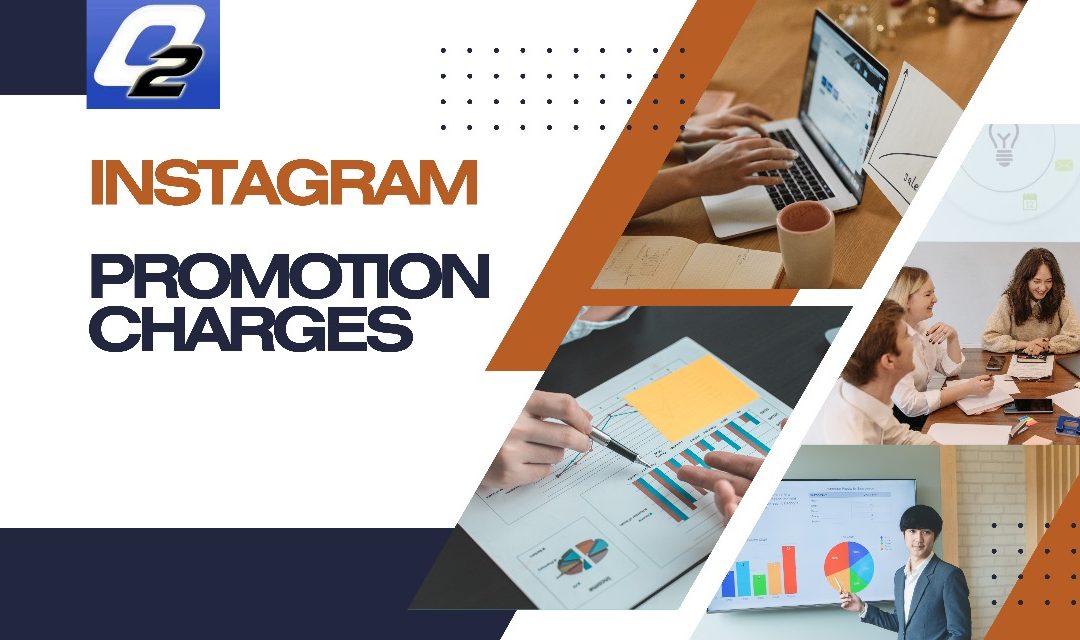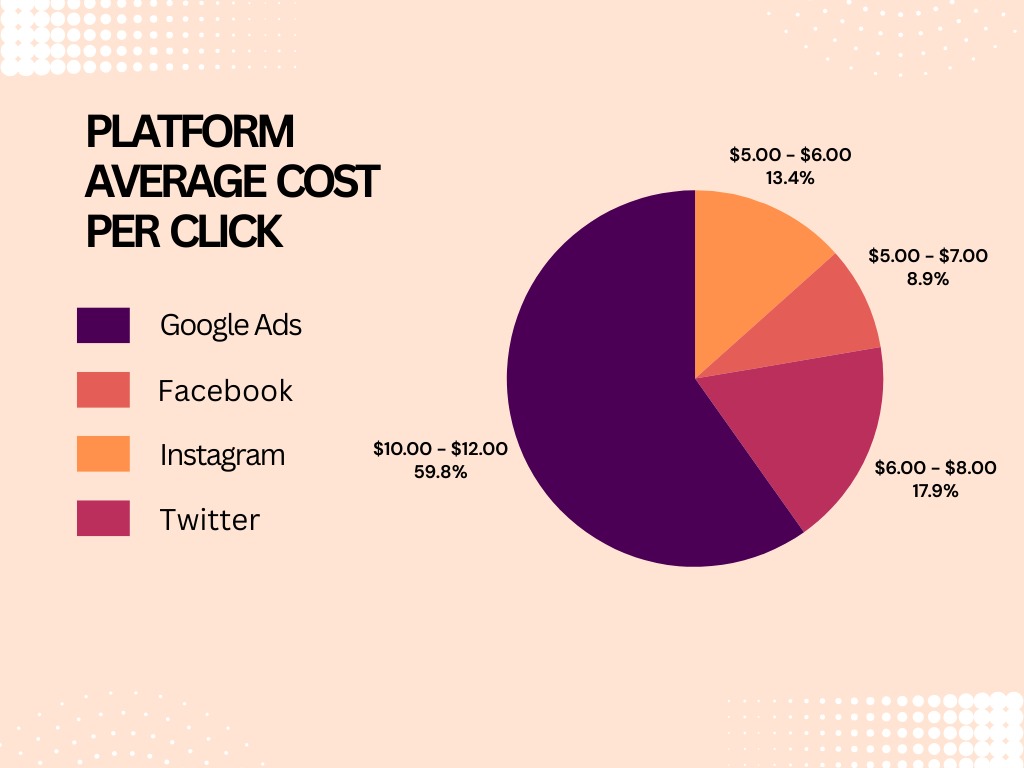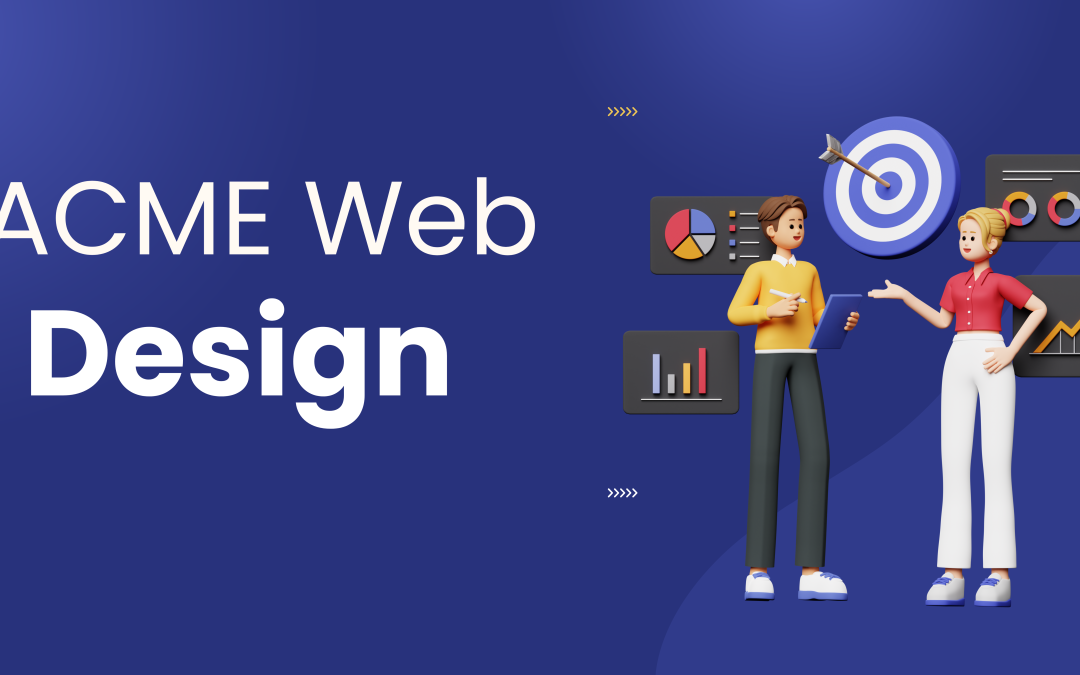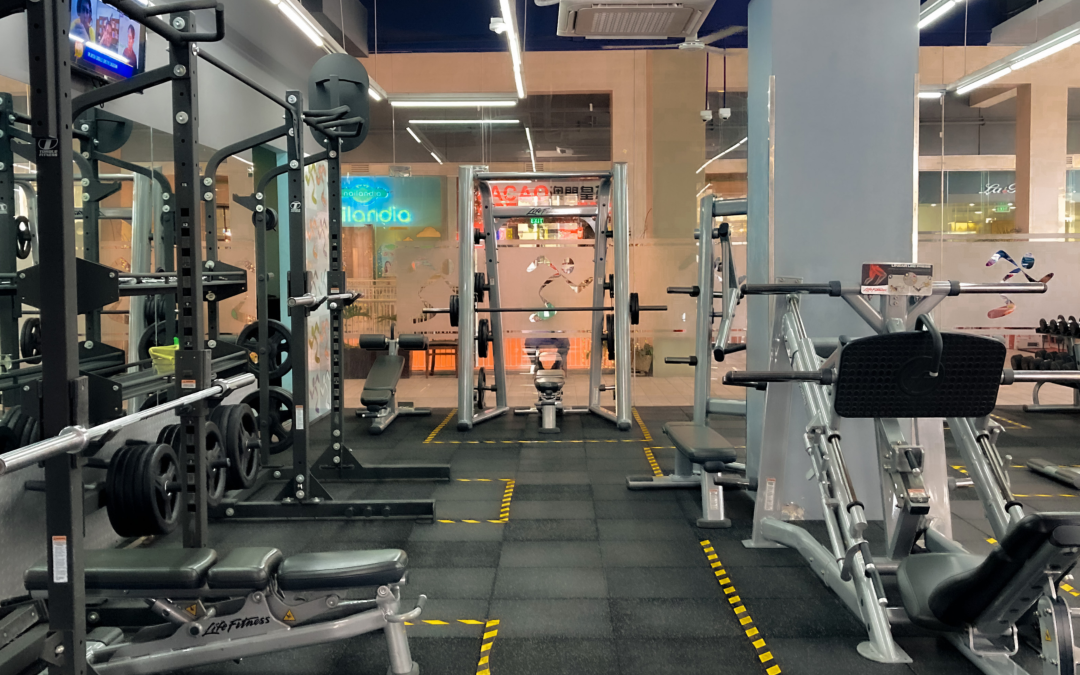
by Shashikanth Heerekar | Jan 3, 2025 | All Things about Marketing
Understanding the charges involved in promoting on Instagram is essential for companies to make knowledgeable judgments and maximize their return on investment. The next section will cover the various aspects of Instagram marketing fees, including pricing models and factors affecting costs, such as how much it costs to run Instagram ads, Instagram advertising cost, and sponsored ads cost.
By knowing the Instagram paid advertising cost, businesses can plan their budgets effectively and decide how much ads on Instagram cost based on their goals and target audience.
Introduction
Instagram promotion is a flexible tool that allows you to showcase your posts to a wider audience and expand your followers. It’s akin to investing in the fame of your pictures or videos! The charges for promotion are adaptable, depending on the reach and duration you desire. Whether you have a modest or substantial budget, Instagram promotion is a savvy way to disseminate your ideas, products, or stories to a global audience!
Understanding the value of Instagram promotion
Instagram is a fun app for sharing photos, videos, and stories with friends. But did you know it can also help people grow their business or become famous? This is where Instagram promotion comes in!
Instagram promotion means paying money so more people can see your posts. Imagine you drew a cool picture and wanted to show it to as many people as possible – that’s how promotion works! When you promote a post, Instagram shows it to people who might not follow you. This helps you get more likes, comments, and followers. It can vary based on your budget, so if you wonder how much an Instagram ad costs,
Why is this important? Let’s say you’re selling handmade bracelets. If only your friends see them, you might sell a few. But if hundreds or thousands of people see your bracelets, you’ll sell more and grow your business! Instagram ads cost can help you reach a bigger audience. Promotions can help you become popular and share your ideas even if you’re not selling something. The potential of Instagram promotion is immense, and it can be a game-changer for your business!
The best part is you don’t need a substantial budget to start. Instagram allows you to set a budget that works for you. Whether it’s a few dollars or more, you can choose how many people you want to reach and for how many days. If you’re curious about how much advertising costs on Instagram, Instagram provides different pricing options based on your target audience. Starting Instagram promotion is affordable and accessible, making it a great platform for businesses of all sizes!
In short, Instagram promotion is like giving your posts a special boost to reach more people. It’s a helpful tool for businesses, artists, and anyone wanting to connect with a bigger audience. So, if you have something amazing to share, Instagram promotion can be your ticket to success! Whether you check how much is promoted on Instagram or look for the Cost of an Instagram ad per month, you can always find a plan that fits your needs.
Costs of Instagram Ads Compared to Other Networks
Instagram is one of the most popular ad platforms because many people use it daily. But how much do Instagram ads cost than other networks like Facebook, Twitter, or Google? Let’s take a look!
Instagram ads work on a system where you pay based on clicks or how many people see your ad. The Cost can change depending on your audience, the quality of your ad, and how long you want to run it. Here’s a simple table to compare Instagram ad costs to other networks:

PLATFORM AVERAGE COST PER CLICK
As you can see, Instagram is not the cheapest option, but it is not the most expensive. The great thing about Instagram is that it’s all about pictures and videos, which makes ads more exciting and creative.
So, if you want to reach young people or show off your product coolly, Instagram ads are worth it. Even though they might cost a little more than Twitter, they’re usually cheaper than Google Ads and can give you great results!
Factors that influence Instagram promotion charges
Instagram promotion helps your posts reach more people, but the Cost isn’t the same for everyone. The Cost of advertising on Instagram depends on many things, like who you want to see your ad, how long it runs, and even how good it looks. Let’s learn more about what decides the advertising costs on Instagram!
Your Target Audience
The people you want to show your ad to are called your target audience. If you pick a specific group, like adults who love fitness or kids who enjoy toys, the Cost of an Instagram ad might be higher. Showing your ad in a big city can also increase the ad cost on Instagram because many people live there. Choosing the right audience helps make your promotion worth the advertising cost on Instagram.
If you are a global ecommerce platform, understanding your audience becomes even more crucial to ensure you allocate your budget effectively.
Competition
If many people promote similar posts simultaneously, the Cost of advertising on Instagram will increase. It’s like an auction where the more people want something, the more expensive it gets.
Ad Quality
Instagram loves good ads! Clear pictures, fun captions, and eye-catching videos cost less because more people like them. These ads are considered high-quality because they are engaging and relevant to the audience. On the other hand, ads that are poorly designed or irrelevant to the audience may cost more because fewer people interact with them. This affects the Cost and price of Instagram ads.
Ad Duration
The longer your ad runs, the higher the Cost of advertising on Instagram. This is because the longer your ad is shown, the more people will see it, increasing the potential reach and engagement. For example, a three-day promotion will cost less than a week-long one.
Budget You Set
You get to decide how much you want to spend. Instagram works with your budget to show your ad to as many people as possible. Whether your budget is small or big, Instagram ensures the Cost of the big ads fits your plan.
Type of Ad
Different ads cost different amounts. For example, ads in Stories might cost less than ads in the main feed because they disappear after 24 hours. Other ads include photo, video, carousel, and collection ads, each with its cost structure.
In short, how much you pay for Instagram promotions depends on who you want to reach, how good your ad is, and how long you want it to run. Understanding these elements aids with budget planning. And get the most out of your promotion!
Comparing different pricing models
When you run ads on Instagram, you can choose how you want to pay for them. These are called pricing models. Let’s learn how you can spend money and how they work!
Cost Per Click (CPC)
With this strategy, you only pay when an ad is clicked. This is great if you want people to visit your website or shop online. For example, if your ad gets 10 clicks and each click costs $1, you’ll pay $10.
Cost Per 1,000 Impressions (CPM)
This model charges you based on the number of people who see your ad. You pay a set amount for every 1,000 views. It’s perfect for reaching a large audience and building awareness about your product or idea.
Cost Per Action (CPA)
You pay when people do a specified activity, such as purchasing or subscribing to your newsletter. This is helpful if you want results that matter, not just clicks or views. Daily or Lifetime Budget
With this option, you set a total amount to spend daily or over the entire promotion. Instagram shows your ad to as many people as possible within that budget.
Which one Should You Choose?
If you want lots of clicks, go for CPC. If you’re looking to reach many people, CPM is the best. If you want people to take action, CPA is ideal.
Each pricing model has benefits; the best depends on your goals. It’s like picking the right tool for the job. Knowing these choices, you may select the smartest way to spend your money on Instagram ads!
Making the most of your Instagram promotion investment
Instagram promotion is a fantastic way to reach more people and grow your audience, but you must use your money wisely to get the best results. Think of it like planting a garden. If you plan carefully, your plants will grow strong and healthy. In the same way, if you plan your Instagram promotion well, you’ll get great results!
First, know who you want to reach with your promotion. If you’re selling toys, it’s better to target kids and parents instead of everyone. Instagram lets you choose your audience based on age, location, and interests. Picking the right audience helps you spend your money where it matters most and can make a difference in how much advertising on Instagram costs.
Next, create an eye-catching post. People love bright pictures, clear videos, and fun captions. A good post will grab attention and make people want to click, lie, or follow. If your ad is boring, fewer people will interact with it, and your money might not be well spent. This is why having a great p st is important for controlling your Cost for Instagram ads.
Timing is also important. Post your promotion when your audience is most active. For example, if your audience consists of teenagers, they might be more active in the evening or on weekends. If you post at the right time, you can save money and get better results for your Instagram paid ad cost.
Another smart move is to set a clear goal for your promotion. Do you want more followers, clicks on your website, or likes on your post? Tracking engagement metrics—like growth in followers or even checking if you get an Instagram unfollow notification—helps you measure success and determine whether your investment works. This lets you decide whether you get the best value for your Instagram promo prices.
Finally, monitor your promotion’s performance once. Instagram provides insights into how many people saw or interacted with your ad. If your ad isn’t doing well, you can change your audience, budget, or post. Doing this helps you control the Instagram advertising pricing and ensure you’re not wasting money.
Planning carefully, setting clear goals, and adjusting when needed can make your Instagram promotion a great success and get you the best value for your money. If you’re wondering how much ads on Instagram cost or how much a sponsored ad costs on Instagram, knowing how to use these tips can help you get the most for your budget!
Conclusion
Finally, firms should consider the Cost of Instagram promotion while establishing marketing plans. Charges might vary depending on the target demographic, marketing period, and type of material being marketed. Businesses can make well-informed judgments on whether or not to
Frequently Asked Questions
1. Which free resources can I utilize to enhance the effectiveness of my Instagram ads?
Instagram features tools like Insights, which provides information on your audience’s demographics, engagement metrics, and ad expenses. Instagram ad management software, Facebook Business Manager, also provides analytics and reporting capabilities. These free sites can help you gain useful knowledge to improve your approach.
2. What if I have no idea how to make Instagram advertisements that work?
If you lack expertise developing effective Instagram advertising campaigns, consider working with upGrowth. Instagram advertising is one of the many facets of digital marketing in which we specialize. We can advise on campaign optimization, strategy, targeting, and creative creation.
3. How much do PPI promotions Cost?
For marketed trends, it can vary from $0.50 per engagement to $200,000 per day. While sponsored trends bring significant exposure and awareness in a short period, the Cost is high, but it may be worthwhile because it ensures placement in the Trends section for a whole day.
4. What exactly does CPM mean?
The Cost per mille is derived from the Latin and old French word ‘mille’, which means thousand. As a result, CPM is frequently used interchangeably with cost-per-thousand. More formally, CPM is the price a marketer will pay for every thousand digital ad impressions.
5. How much will Instagram advertisements cost in 2025?
On average, an Instagram campaign will cost between 20 cents and $2 per click (CPC). Instagram advertisements are only increasing in Cost.

by Shashikanth Heerekar | Dec 28, 2024 | All Things about Marketing, SEO News
Acme Web Design is a leading web design firm that builds custom designs for companies of all sizes. It employs highly trained designers and developers and has been assisting Clients in creating strong websites and driving corporate success.
Introduction to Acme Web Design
Acme Web Design is a company that makes websites look amazing and easy to use! Think of a website as a digital home; Acme Web Design helps build and decorate that home beautifully. They make sure that websites are colourful, simple to understand and work well on all devices, like computers, tablets, and phones. Whether for a shop, school, or someone sharing fun ideas, Acme Web Design ensures everyone can visit the website smoothly. Their job is like being digital artists and builders, helping people create their dream websites that shine bright on the Internet!
Experience and expertise at Acme Web Design
At Acme Web Design, we are not just another web design company but experts at creating amazing websites! Please think of us as builders, but instead of houses, we build places on the Internet where people can visit, shop, learn, and have fun. We have been doing this for a long time, so we’ve learned a lot about making websites look great and work perfectly.
Our team comprises creative designers who make websites look pretty and smart developers who ensure everything works as it should. Together, we create websites that are easy to use and super cool.
Whether we’re creating a new website for a toy store, a library, or even a school, we always ensure that the website meets the needs of the people who will use it. We also ensure that these websites are safe and fast and work on all devices, like computers, tablets, and phones. Our past projects include creating sites, demonstrating our versatility and ability to cater to various industries.
At Acme Web Design, we love helping businesses and people share their ideas online. No matter how big or small the job is, we’re ready to make it awesome!
Quality assurance at Acme Web Design
At Acme Web Design, quality assurance means ensuring everything we create works well and looks great! Imagine you’re building a cool toy and want to check that it works perfectly before showing it to your friends. That’s what we do with websites.
Our team carefully checks every part of the website, including the buttons, links, and pictures, to ensure they work correctly. We also test how the website looks on Laptops, tablets, and phones, which are examples of gadgets that ensure it looks amazing everywhere.
We don’t stop there! We ensure the website loads quickly, has no mistakes and is easy for people to use. If we find something that’s not quite right, we fix it immediately.
Why do we do this? Because we want everyone who visits the websites we create to have the best experience possible. Quality assurance is like giving our websites a “thumbs up” before showing them to the world.
At Acme Web Design, we believe in making fun, easy, and perfect websites for everyone. And quality assurance helps us do just that.
Meeting customer demands with Acme Web Design services.
Acme Web Design Services is all about making websites people love visiting! When someone wants a new website for their business, school, or even a fun project, they often have special ideas and needs. Acme Web Design listens carefully to customers’ wants and works hard to give them the perfect website because we believe in putting our customers’ needs first.
Imagine you are drawing a picture for your friend, and they tell you exactly what colours and shapes they like. You would try to make a picture that matches their request. That’s what Acme
does but with websites! We have a detailed process where we listen to our customers’ needs, [explain the process], ensuring the website is easy to use, looks beautiful, and works well on phones and computers.
Acme Web Design also helps keep the website looking fresh and exciting. We offer updates such as [specific updates] because we know how important it is to make customers happy by giving them what they need, just like you feel when you get the gift you want.
Acme Web Design Services is a magic tool that turns ideas into amazing websites. It’s all about making dreams come true for everyone who needs a website!
Acme Web Design portfolio showcase
A portfolio showcase is like a big, colourful book that shows all the amazing work someone has done. In this case, Acme Web Design is a company that creates cool and creative websites. The “Portfolio Showcase” is where Acme shares all the wonderful websites they have made for their clients.
Think of it like an art gallery, but you see pictures of websites instead of paintings. Each website has its style and design, just like each painting is unique. The portfolio helps people understand how talented Acme Web Design is and how they can make different kinds of websites, from fun ones for kids to serious ones for businesses.
By looking at their portfolio, you can see how they use colours, pictures, and words to make websites that are easy to use and nice. It also shows how Acme Web Design listens to its clients and makes websites that suit each person or company’s needs.
This showcase is important because it helps Acme Web Design show its skills to new clients who might want them to build their websites. It’s like a superpower book that tells everyone, “Look how awesome we are at creating websites!”
Choosing Acme Web Design
When you pick Acme Web Design, you make a smart choice! Acme Web Design is like a team of magical builders who make super cool websites. These websites are where people learn about your business, play games, or even shop online! They ensure the websites are pretty and easy to use, just like your favourite app or game.
The Acme team is full of experts who know how to make your website stand out. Imagine your website as a house, and they are the ones who paint it in bright colours, make the doors easy to open, and even add a fun playground in the yard.
They also ensure that your website works well on all devices, such as laptops, tablets, and phones, so that anyone can visit it anytime. Plus, if you have a special idea, they’ll help turn it into something real and amazing.
Choosing Acme Web Design means your website will look awesome, work great, and make people happy when they visit. It’s the best choice for anyone who wants to shine online!
Conclusion
Acme Web Design creates beautiful, easy-to-use websites that help people share their ideas, products, and stories with the world. Like drawing a colourful picture to show your creativity, Acme Web Design makes creative, organized, and helpful websites.
Imagine having a magical book where you can read, learn, and play. That’s— what a good website feels like! Acme Web Design uses tools like pictures, colours, and buttons to make websites fun and simple to explore. They also ensure everything is neat, like keeping your school bag tidy, so visitors can easily find what they want.
Acme Web Design aims to help businesses and people succeed by giving them a cool and smart online space. They listen to their clients’ wants and use clever ideas to make their websites stand out. It’s like building a special house for someone—every detail matters!
So, Acme Web Design works hard to make the Internet a better, brighter place for everyone. Whether you’re looking for something or sharing your work, they ensure the experience is always fantastic.
Frequently ask Questions
1. What is Acme Web Design?
Acme Web Design is a company that creates websites for enterprises. They create visually beautiful and useful websites that are easy for people to use and ensure that your website works smoothly for everyone.
2. Why do I need a website?
A website helps people find your business online. It functions as a digital showroom, displaying your services or products to potential customers anytime and making it easier for them to learn about and contact you.
3. How much does a website cost?
The price of building a web page fluctuates based on its size and complexity. Acme Web Design will give you a custom price based on your needs, ensuring you get the features you want at a fair cost.
4. What is the duration required to develop a website?
Building a website might take many weeks, depending on its level of complexity. Acme Web Design works effectively to guarantee that the website is completed on date while maintaining high quality, accessibility, and style.
5. Can I update my website later?
Yes, you can always update your website later. Acme Web Design builds websites with easy-to-use tools, allowing you to change text and images and add new features whenever you need, ensuring your site stays fresh and relevant.
6. Does my website operate on mobile devices?
Absolutely! Acme Web Design ensures your website is mobile-friendly, looks good, and works well on phones, tablets, and computers. It ensures that people can access your website regardless of their device.
7. Do I need a domain name for my website?
Yes, a domain name is like your website’s online address. Acme Web Design can help you choose and register a domain name that reflects your business, making it easy for customers to find you online.
8. Can Acme Web Design help with website content?
Yes, Acme Web Design can assist you with creating content for your site. Whether text, images, or videos, they help you showcase your business clearly and attractively to engage your website visitors.
9. What happens if my website has problems?
If something goes wrong, you can contact Acme Web Design. They offer support to fix any issues quickly and efficiently, ensuring that your website works perfectly and your visitors have a smooth experience.
10. How do I get started with Acme Web Design?
Getting started is easy! Contact Acme Web Design to discuss your website needs. They will guide you through the process, helping you plan, design, and launch a website that perfectly suits your business goals.

by Shashikanth Heerekar | Dec 25, 2024 | All Things about Marketing, Technology
Explore the Remote Digital Marketing Internship! Gain real-world experience, develop essential marketing skills, and work remotely at your convenience.
Introduction
The demand for skilled digital marketers has skyrocketed in today’s fast-paced digital world. As companies expand their online presence, they increasingly rely on professionals who can drive results in the virtual space. A remote digital marketing internship provides an excellent opportunity for aspiring marketers to gain hands-on experience, build portfolios, and prepare for a rewarding career—all from the comfort of their homes.
This guide covers everything you need about remote digital marketing internships, from the required benefits and skills to tips for securing the perfect role. Whether you’re a student, recent graduate, or career changer, this comprehensive resource will equip you with the tools to succeed.
Why Choose a Remote Digital Marketing Internship?
Flexibility and Convenience
One of the most significant advantages of a remote internship is its flexibility. You can work from anywhere, whether it’s home, a coffee shop, or a coworking space. This convenience allows you to balance your studies or other commitments while gaining valuable experience.
Exposure to Real-World Projects
Remote internships often involve working on live campaigns, analyzing data, and contributing to actual business strategies. This exposure helps you understand the nuances of digital marketing and prepares you for full-time roles.
Cost-Effectiveness
Remote internships are cost-effective because there’s no need to commute or relocate. You can save on travel and accommodation expenses, making them ideal for budget-conscious individuals. These advantages are just a few of the many benefits of remote work that make it appealing to aspiring digital marketers.
Networking Opportunities
Despite being remote, these internships provide opportunities to network with industry professionals worldwide. Tools like Zoom, Slack, and LinkedIn make connecting with mentors, peers, and potential employers easier.
Key Skills for Success in Digital Marketing Internships
Technical Proficiency
Familiarity with digital marketing tools such as Google Analytics, SEMrush, Hootsuite, and Mailchimp is essential. Understanding SEO principles, PPC campaigns, and social media algorithms will give you a competitive edge. A strong understanding of SEO principles, PPC advertising, and social media algorithms is essential to optimize online visibility and drive targeted traffic.
Analytical Thinking
Digital marketing involves extensive data analysis. Success requires interpreting metrics, tracking performance, and optimizing insights-based strategies. Optimizing plans necessitates analyzing analytics, monitoring campaign performance, and utilizing insights. This analytical approach ensures that marketing efforts are aligned with business goals and deliver measurable results.
Creativity
Creativity drives effective marketing campaigns. Whether designing graphics, writing content or brainstorming innovative ideas, your ability to think outside the box will set you apart. Thinking outside the box allows you to craft unique experiences that differentiate your brand and leave a lasting impression.
Communication Skills
Strong written and verbal communication skills are vital for collaborating with team members, creating compelling content, and presenting your ideas effectively. Strong verbal communication skills are essential for collaborating effectively with team members, presenting ideas persuasively, and building client relationships.
Adaptability
The digital landscape is ever-evolving. Being adaptable and eager to learn new trends, tools, and techniques will keep you ahead of the curve.
The digital landscape is constantly evolving, necessitating a proactive approach to adaptation. Embrace continuous learning to stay ahead of emerging trends, tools, and techniques.
Types of Remote Digital Marketing Internships
Social Media Marketing
As a social media intern, you’ll manage content calendars, create posts, engage with audiences, and analyze social media metrics across platforms like Instagram, Twitter, and LinkedIn.
Content Marketing
Content marketing involves creating blog posts, articles, infographics, and videos to engage audiences and drive traffic. You’ll learn how to craft compelling stories that resonate with target demographics.
SEO and SEM
Search Engine Optimization (SEO) and Search Engine Marketing (SEM) are integral to improving online visibility. Interns in this domain focus on keyword research, on-page optimization, and running PPC campaigns.
Email Marketing
Email marketing interns work on crafting newsletters, segmenting email lists, and optimizing open and click-through rates to nurture leads and drive conversions.
Performance Marketing
In performance marketing internships, you’ll learn how to set up and manage paid advertising campaigns, track ROI, and ensure that marketing budgets are spent effectively.
How to Find Remote Digital Marketing Internships
Leverage Online Job Portals
Platforms like LinkedIn, Indeed, Glassdoor, and Internshala are excellent resources for finding remote digital marketing internships. Use particular keywords and criteria to make your search more focused.
Join Networking Groups
Networking groups on Facebook, LinkedIn, and other platforms often share internship opportunities. Participating in these communities can help you make beneficial connections.
Reach Out Directly
If there’s a company you admire, don’t hesitate to reach out directly. Send a personalized email to the hiring manager expressing your interest and attaching your resume and portfolio.
Utilize Freelance Platforms
Websites like Upwork and Fiverr often have short-term projects that can serve as a stepping stone to securing an internship.
Crafting the Perfect Application
Tailor Your Resume
Highlight relevant coursework, certifications, and projects. Quantify your accomplishments wherever you can, and use action verbs.
Write a Compelling Cover Letter
Your cover letter should convey your enthusiasm for digital marketing and explain why you fit the role perfectly. Be specific about how your skills align with the Company’s needs.
Showcase Your Portfolio
A portfolio showcasing your previous work—social media posts, blog articles, or marketing campaigns—can significantly impact you. Think about producing sample projects to show off your skills if you’re new.
Prepare for Interviews
Prepare to talk about how well you understand digital marketing tactics, tools, and trends. Prepare examples of how you’ve applied these in real-life or hypothetical scenarios.
Make the utmost of Your Digital Marketing Internship.
A digital marketing externship is an excellent opportunity to gain hands-on experience, build your professional network, and develop the skills to succeed. Still, to truly maximize the value of your externship, it’s essential to approach it with intention and focus. This is how you can make the most of your externship experience.
Set Clear pretensions
Having clear, specific pretensions during your externship will help guide your literacy process and ensure you maximize openings. Pretensions also help you stay focused and motivated, making tracking your progress and measuring success easier.
How to Set Clear pretensions
Identify crucial Chops to Master: Think about what you want to learn. Do you want to ameliorate your SEO chops, learn how to manage social media juggernauts, or master Google Ads? Setting specific learning objectives will help you concentrate on developing chops that align with your long-term career goals.
Align your ambitions with the Company’s requirements: Understand the business objectives and how you can contribute. For example, suppose the Company concentrates on increasing its social media engagement. In that case, it should set a goal to contribute to developing and prosecuting a content timetable for platforms like Instagram or Twitter.
Set a Timeline and produce mileposts to track your progress. Setting a timeline for achieving certain goals will help you stay on track and ensure that your sweats produce palpable results.
Stay Organized
Use productivity tools like Trello, Asana, or Notion to manage tasks and deadlines efficiently.
Because digital marketing moves quickly, several systems often operate simultaneously. Staying organized helps you keep track of your tasks, meet deadlines, and manage your time efficiently.
How to Stay Organized
Use Project Management Tools: Trello, Asana, or Notion can help you manage your tasks and deadlines. These platforms allow you to produce to-do lists, set deadlines, and unite with your platoon members. Each task’s progress can be easily monitored, allowing you to make sure nothing is overlooked.
Prioritize Tasks Not all tasks are equal: Identify the most critical tasks and concentrate on completing them first. Prioritizing will help you avoid getting overwhelmed and complete your work efficiently.
Produce a Daily Routine Start your day by reviewing your tasks. Block out time for each task and avoid multitasking to stay focused.
Seek Feedback
Regularly ask for feedback from your administrator to identify areas for enhancement and demonstrate your commitment to growth.
How to Seek Feedback
Request Regular CheckDo- sways Do not stay for formal performance reviews to get feedback. Schedule a regular one-on-one meeting with your administrator or tutor to bandy your progress. These checklists will allow you to ask for advice, clarify dubieties, and understand what you can ameliorate.
Be Open to review and accept feedback with an open mind. Avoid being protective; hear precisely to understand what you can learn from the notice. Showing your willingness to grow will make a positive impression on your director.
Build Relationships
Take the initiative to connect with your teammates and participate in virtual team-building activities. Networking is key to future opportunities.
Building strong professional relationships during your internship can provide valuable networking opportunities and mentorship. These relationships may lead to job offers, recommendations, or future collaborations.
How to Build Relationships:
Engage with Teammates: Take the initiative to introduce yourself to colleagues and engage in casual conversations. Don’t limit yourself to just your direct supervisor—connect with other team members who may provide different perspectives on the work and industry.
Attend Virtual Team-Building Activities: Many companies host virtual team-building events, such as online games, happy hours, or brainstorming sessions. Participate in these events to bond with your colleagues outside of work-related tasks.
Seek Mentorship: If you admire someone in the cCompany’swork, ask if they would offer mentorship. This could be a great way to learn from someone with more experience and gain industry insights that will be valuable for your career.
Document Your Work
Maintain a record of your projects and achievements. This documentation will be invaluable when applying for future roles or updating your portfolio.
How to Organize Your Documentation:
Create a digital portfolio using platforms like Behance or WordPress where you can showcase your best work.
Use Google Drive or Notion to store project documents, reports, and feedback for easy reference.
Create a journal or logbook where you write about the tasks you completed each day, the tools you used, and any challenges or successes.If working with multilingual teams or international clients, also consider using tools to translate PDFs, making your documentation accessible to a wider audience.
The Future of Remote Digital Marketing
The remote work trend is here to stay, and digital marketing is at the forefront of this transformation. With technological advancements and global connectivity, aspiring professionals have unprecedented opportunities to carve out successful careers from any location.
By leveraging the insights and strategies outlined in this guide, you can embark on a fulfilling journey in remote digital marketing, gain valuable experience, and lay the foundation for long-term success.
Conclusion
A remote digital marketing internship is an excellent stepping stone for anyone looking to enter the industry. It offers flexibility, practical experience, and the chance to work with professionals from around the globe. By honing the right skills, building a strong application, and maximizing your internship experience, you’ll be well on your way to a rewarding career in digital marketing.
FAQS
1. What is a remote digital marketing internship?
A. A remote digital marketing internship is where you work remotely on a company’s digital marketing projects and tasks. This allows you to gain experience and skills in digital marketing from anywhere in the world.
2. How do I find remote digital marketing internships?
A. You can find remote digital marketing internships by searching online job boards (like Indeed, LinkedIn, and Internships.com), company websites, and social media platforms. Many companies also post internship opportunities on their careers pages.
3. What skills are required for a remote digital marketing internship?
A. Typically, a background in marketing, communications, or a related field is required, along with skills in digital marketing tools like Google Analytics and social media. Proficiency in content management systems is also desirable.
4. Will I be paid for my remote digital marketing internship?
A. Some companies offer paid internships, while others may be unpaid or offer a stipend. It’s essential to discuss compensation with the Company before accepting the internship.
5. How will I communicate with my team during a remote digital marketing internship?
A. You’ll communicate with your team through video conferencing tools like Zoom or Google Meet, email, and project management software like Trello or Asana. Regular check-ins will ensure you stay connected and receive feedback throughout the internship.

by Shashikanth Heerekar | Dec 10, 2024 | All Things about Marketing
Learn how to rank your catering services online! Boost visibility, attract clients, and grow your catering business with simple SEO strategies.
Introduction
Running a catering business in today’s digital age requires more than great food and service. To stay ahead of the competition, caterers must master the art of online visibility. SEO (Search Engine Optimization) is a powerful tool that helps catering companies rank higher on search engines, attract new clients, and increase bookings. This step-by-step guide will walk you through how to rank your catering services online and grow your business.
Understanding the Importance of SEO for Catering Services
SEO isn’t just for e-commerce or tech companies. Catering services, whether food catering, wedding catering, or corporate event catering, can benefit significantly from increased online visibility. Potential clients search for “catering near me” or “best catering companies near me” when they need catering services. If your catering website appears at the top of search results, your chances of booking that client increase exponentially.
Build a User-Friendly Catering Website
Your website is your digital storefront. Make sure your website is user-friendly, quick to load, and responsive. Highlight essential pages like:
- Catering menu: Showcase your menu options with enticing images.
- About Us: Build trust with potential clients.
- Reach Out to Us: Make it simple for customers to contact you.
- Service Pages: Separate pages for wedding catering, corporate catering, party catering, and more.
Optimize Your Catering Website for SEO
SEO optimization includes a few essential techniques:
- Use keywords such as “catering services,” “wedding catering,” “party catering,” and “corporate event catering services” in your article material to make sure your website is mobile-friendly and easy to use.
- Meta Titles & Descriptions: Write compelling meta titles and descriptions for every page.
- Alt Text for Images: Add alt text to images like “gourmet catering dishes“ or “healthy catering options.”
- Internal Linking: Link pages like your “Catering Menu“ to your “Contact Us“ page to guide users.
Master Local SEO for Caterers
Most people searching for catering services are looking for local companies. Here’s how to boost local SEO:
- Google My Business: Claim and optimize your GMB profile with your location, services, hours, and reviews.
- Local Keywords: Use location-based keywords like “catering services near me“ or “best caterers in [City Name].”
- Local Citations: List your business on directories like Yelp, TripAdvisor, and wedding vendor platforms.
- Customer Reviews: Encourage happy clients to leave reviews online to boost credibility and trust.
Create High-Quality Content to Attract Clients
Content marketing is essential for SEO. Here’s what you can do:
- Blog Articles: Write blogs like “How to Plan a Perfect Wedding Menu“ or “10 Tips for Hiring Corporate Catering Services.”
- Respond to common inquiries like “What are the best wedding catering services?”
- Photo Galleries: Share images of past events showcasing your gourmet catering options, healthy catering choices, and event decor.
Leverage Social Media for Catering Digital Marketing
Social media platforms like Instagram, Facebook, and Pinterest are goldmines for caterers. Here’s how to use them effectively:
- Visual Content: Post mouthwatering images of dishes from your catering menu.
- Video Content: Share behind-the-scenes content from weddings and corporate events.
- Call-to-Action (CTA): Encourage users to visit your website to book catering services.
Boost Visibility with Paid Advertising
If you need help ranking organically, consider using paid ads. Google Ads and Facebook Ads allow you to target local customers who are searching for “affordable catering services“ or “catering for large events.”
Use Analytics to Track Your Progress
Use Google Analytics and Google Search Console to track how people find your catering company online. Analyze which pages perform well and identify opportunities for improvement.
SEO Tools for Caterers
Here are some must-have tools for catering SEO:
- Google Analytics: Measure website traffic.
- Google Search Console: Track keyword rankings and website issues.
- SEMrush or Ahrefs: Analyze competitor SEO strategies.
- Yoast SEO (for WordPress sites): Optimize on-page SEO and meta descriptions.
Key Takeaways
Catering companies can significantly increase their online visibility by following these ten steps. From optimizing the catering website to mastering local SEO, these strategies ensure your business appears on page one of search results. If you’re a caterer offering event, corporate, or gourmet catering, these SEO tips will help you stand out, attract clients, and increase revenue.
Conclusion
Ranking your catering services online can transform your business. From improving your catering website’s optimization to mastering local SEO and using social media, these techniques position your business as one of the best catering companies near me. Stay ahead of the competition, increase your online visibility, and watch your bookings grow. You will be successful if you follow this detailed guide.
Frequently Asked Questions
Q1. Why is SEO important for catering businesses?
Catering companies may improve their internet presence, draw in more customers, and increase reservations with the use of SEO. Search engines like Google allow potential customers to find your services easily.
Q2. How long does it take for a catering company to get SEO results?
SEO, a long-term strategy, usually takes three to six months to show noticeable effects. However, results may appear faster with local SEO and Google My Business.
Q3. Which keywords should I use to rank my catering website?
To target potential clients, use high-traffic keywords like “catering services near me,” “wedding catering,” “corporate event catering,” “party catering,” and “affordable catering services.”
Q4. What are the best SEO practices for a catering website?
Focus on optimizing page speed, ensuring mobile-friendliness, using relevant keywords, improving meta descriptions, internal linking, and adding quality content like blogs and customer reviews.
Q5. What is local SEO, and how does it benefit catering companies?
Local SEO helps catering companies appear in local search results. By using Google My Business, local keywords, and online reviews, caterers can attract nearby clients.
Q6. How can I increase the visibility of my catering business online?
Boost visibility by optimizing your website, claiming your Google My Business profile, using local SEO tactics, publishing blogs, promoting on social media, and running paid ads.
Q7. How can social media marketing help my catering business rank better?
Social media platforms like Instagram, Facebook, and Pinterest increase brand visibility. Sharing photos of catering menus, event setups, and behind-the-scenes content helps attract more clients.

by Shashikanth Heerekar | Dec 9, 2024 | All Things about Marketing
Discover how to rank your gym fitness business with effective SEO strategies. Learn tips on local SEO, content optimization, and driving traffic.
Introduction
In the competitive fitness industry, ranking your gym online is crucial to attracting more clients and growing your business. Search Engine Optimization (SEO) is a powerful tool that helps gym owners increase visibility and drive targeted website traffic. This guide will explore strategies to rank your gym fitness business, including the role of on-page, off-page, and technical SEO.
How SEO Services Can Help Gym Fitness to Rank on Google
In today’s digital-first world, gyms and fitness center’s must have a strong online presence to attract more customers and stay competitive. SEO (Search Engine Optimization) is the most effective way to improve your gym’s visibility on Google, drive organic traffic, and increase memberships. In this article, we’ll explore how SEO services can help gym fitness businesses rank higher on Google and provide actionable tips for success.
The Importance of SEO for Gym Fitness
SEO for gyms involves optimizing your website and online content so that search engines rank it higher when users search for related terms like gym workout, fitness tips, or workout for beginners. With the rise in health consciousness and the growing popularity of specialized fitness programs such as HIIT workouts, Zumba workouts, and yoga workouts, having a solid SEO strategy is vital for making an impression in the congested fitness market.
How SEO Services Can Transform Your Gym Fitness Business
On-Page SEO: The Foundation of Your Website
The goal of on-page SEO is to enhance user experience and visibility by optimizing items that are immediately on your website.
- Keyword Integration: Using high-intent keywords like gym workout routine for women, gym etiquette, and how to lose weight fast at the gym strategically across your content ensures relevance for search queries.
- Content Optimization: Publishing engaging blogs and guides about workout routines for seniors or fitness tips for weight loss can attract various demographics.
- Website Optimization: Ensuring your website is mobile-friendly, loads quickly, and has an intuitive layout improves user experience, directly impacting SEO rankings.
Off-Page SEO: Building Authority and Trust
Off-page SEO focuses on activities outside your website to build credibility and authority.
- Link Building: Backlinks from reputable sites within the fitness niche can boost your site’s credibility. For example, partnering with blogs that discuss personal training keywords or muscle gain topics can increase referral traffic.
- Social Media Presence: Sharing engaging content about CrossFit workouts, Pilates workouts, or body transformation journeys can drive traffic to your website while building community trust.
Technical SEO Audit: Ensuring Your Site is Search-Engine Friendly
Technical SEO makes ensuring that your website satisfies search engines’ technical standards.
- Structured Data: Using schema markup for services like HIIT or best gym workouts for beginners helps search engines understand your offerings.
- Sitemap Submission: A clean XML sitemap ensures your site is fully indexed by Google, improving discoverability.
- Error Fixing: Eliminating broken links and duplicate content ensures smooth navigation for users and search bots.
Local SEO: Attracting Nearby Clients
Local SEO is crucial for gyms because most clients search for facilities nearby.
- Google My Business Optimization: A well-maintained GMB profile featuring photos (e.g., Crunch Fitness Braintree photos) and accurate information increases your chances of appearing in local searches.
- Local Business Listings: Adding your gym to directories like Yelp or Map Pack improves local visibility.
- Map Pack Optimization: Optimizing for the map pack ensures your gym appears prominently when users search for terms like gym local or SEO gym.

Crafting Content to Attract and Engage Users
Content is a powerful tool in SEO. Tailoring it to your audience ensures higher engagement and conversions.
Types of Content to Publish
Workout Tips and Guides:
Topics like exercise tips, gym nutrition tips, how to gain muscle mass, or safe cardio routines using rebounder resonate with fitness enthusiasts.
Demographic-Specific Content:
Create separate content for workouts for women with indoor trampoline, workouts for men, exercises for seniors, and workouts for athletes to attract various audience segments.
Videos and Infographics:
Visual content showcasing Zumba workouts, gym safety tips, or proper usage of a power rack can boost social shares and website visits.
SEO Strategies for Gym Fitness
Optimize for Mobile Users
With most users searching for gyms on their mobile devices, having a responsive website is critical. Improved user experience and higher rankings are two advantages of a design that is responsive.
Target Long-Tail Keywords
Long-tail keywords, such as “gym workout routine for beginners” or “how to optimize a fitness club website,” attract more qualified leads closer to making a decision.
Leverage Social Proof
Display reviews, success stories, and testimonials to gain the trust of potential customers. Highlight results like body transformations, client journeys, and how quality gym clothing played a role in their fitness motivation to inspire others.
Utilize Analytics
Tools like Google Analytics can track your website’s effectiveness. Identify which keywords drive traffic and tailor your strategy accordingly.
Conclusion
Investing in SEO services is essential for gyms looking to rank higher on Google and attract more clients. Combining strategies like on-page optimization, local SEO, and engaging content creation, your gym can achieve increased visibility, higher traffic, and stronger client engagement. Start implementing these SEO strategies today and take your gym fitness business to the next level.
If you need professional assistance, contact an experienced SEO company to craft a custom plan tailored to your gym’s needs. Let your gym dominate search results and thrive in the digital age!
FAQs
1. How does SEO benefit gym businesses?
SEO increases your gym’s online visibility, driving more organic traffic and potential memberships. You can reach a larger audience by ranking for terms like fitness SEO or health and fitness.
2. What are the best keywords for gym SEO?
Effective keywords include on-page SEO, gym workout, weight loss, and healthy lifestyle, as they align with user intent.
3. Why is local SEO important for gyms?
Most gym clients search for facilities near their location. Local SEO ensures your business appears in searches for phrases like gym decorator near me or anytime fitness Google Maps.
4. What role does content play in SEO for gyms?
Content engages users and improves rankings. Topics like HIIT workouts, CrossFit routines, or yoga benefits drive traffic while addressing user needs.
5. How can I improve my gym’s online presence?
Optimize your website for mobile, focus on local SEO, publish high-quality content, and maintain an active social media presence.
6. Why should I invest in professional SEO services?
SEO experts provide tailored strategies, such as technical SEO audits, link building, and content creation, to ensure better results and faster growth for your gym business.

by Shashikanth Heerekar | Dec 9, 2024 | All Things about Marketing
Discover how to rank astrology services online with this step-by-step guide. Learn to optimize for keywords like astrology, horoscope, birth chart, and spiritual guidance.
Introduction
Astrology is a timeless art that offers insights into life through horoscopes, birth charts, and astrological predictions. Whether you’re an astrologer specializing in Vedic, Western, or Chinese astrology, standing out online requires strategic SEO (Search Engine Optimization). This guide will help you rank your astrology services effectively, ensuring they reach those seeking spiritual guidance, love, or career astrology.
Understand the SEO Landscape for Astrology Services
Why SEO Matters for Astrology Services
In today’s digital age, most clients search online for astrologers or horoscope services. By optimizing your website for terms like zodiac signs or tarot reading, you can increase visibility, attract more visitors, and grow your business.
Identify Your Target Audience
Your audience might include individuals seeking:
- Love astrology: Relationship advice based on zodiac signs.
- Career astrology: Guidance on career growth using planetary positions.
- Financial astrology: Insights into financial prospects.
- Spiritual guidance: Answering life’s questions through psychic readings and fortune telling.
Build an Optimized Website
On-Page SEO for Astrology Services
- In your page titles, headings, and meta descriptions, use relevant keywords like astrology, birth chart, horoscope, and spiritual guidance.
- Write detailed service pages for love, marriage, and health astrology to cover diverse client needs.
Technical SEO
- Ensure your website loads quickly and is mobile-friendly, as many users search on their smartphones.
- Add schema markup for services like tarot reading, palm reading, and astrological predictions to enhance search engine visibility.
Create Engaging and Keyword-Rich Content
Blog Topics for Astrology Services
Content is king for SEO. Here are some blog ideas:
- “Understanding Your Natal Chart: A Beginner’s Guide”
- “How Planetary Positions Impact Your Career Astrology”
- “Top Differences Between Vedic Astrology and Western Astrology”
Incorporate Visuals
- Use infographics to explain zodiac signs or planetary positions.
- Create videos about how tarot readings or palm readings work.
Leverage Local SEO for Astrology Services
If you provide in-person consultations, local SEO is crucial:
- List your business on Google My Business with accurate details about your location and services.
- Use location-based keywords like “Best astrologer in [City]” or “Tarot reading near me.”
Use Social Media for Brand Visibility
Social media is a powerful tool for astrologers:
- Share daily horoscopes or motivational messages based on zodiac signs.
- Host live sessions on spiritual guidance, love astrology, or career astrology to engage your audience.

Build High-Quality Backlinks
Backlinks from authoritative sites improve your search rankings:
- Collaborate with blogs or websites specializing in spiritual guidance, fortune telling, or astrological predictions.
- Write guest posts on topics like “How to Interpret Your Birth Chart” or “The Role of Planetary Positions in Health Astrology.”
Utilize AI and Technology for Better Optimization
Modern tools can enhance your SEO strategy:
- Use AI-powered tools for keyword research to identify the most relevant phrases like love astrology or marriage astrology.
- Optimize your content with natural language processing to better match user intent.
Focus on Mobile and Voice Search Optimization
Since many clients use smartphones and voice assistants to search, ensure your site is optimized for:
- Mobile speed and usability.
- Voice search queries like “What’s my horoscope for today?” or “Find a psychic reading near me.”
Engage Clients with Email Marketing
Email marketing keeps your clients updated about your services:
- Send weekly horoscopes tailored to their zodiac signs.
- Share personalized insights based on their natal charts.
Measure and Refine Your SEO Strategy
SEO is an ongoing process. To track the effectiveness of your website, use technologies such as Google Analytics:
- Track which pages get the most traffic (e.g., your blog on tarot reading or financial astrology).
- Refine your strategy to focus on high-performing keywords like health astrology or palm reading.
Conclusion
Ranking astrology services online requires a strategic mix of SEO, high-quality content, and consistent engagement. Whether you specialize in Vedic astrology, Western astrology, or Chinese astrology, optimizing your website with relevant keywords like zodiac signs, tarot reading, and spiritual guidance can help you reach the right audience. Start optimizing today and watch your astrology services shine online!
FAQs
What are the best keywords for astrology services?
Keywords like astrology, horoscope, birth chart, zodiac signs, and spiritual guidance are effective. Include specific terms like career astrology, love astrology, or tarot reading, depending on your niche.
How can I rank locally for astrology services?
Optimize your website for local keywords like “astrologer near me” or “Best palm reading in [City].” Also, list your business on Google My Business with accurate details.
How does content help in ranking astrology services?
Creating blogs on topics like natal charts or the significance of planetary positions builds authority and attracts traffic. Content also helps incorporate relevant keywords naturally.
Can I use social media for my astrology services?
Yes, sharing daily horoscopes, live spiritual guidance sessions, and marriage astrology tips can engage your audience and drive traffic to your website.
How does AI help optimize astrology services online?
Artificial intelligence (AI) aids in keyword research, content creation, and user behaviour analysis, ensuring your website stays competitive in search rankings.








